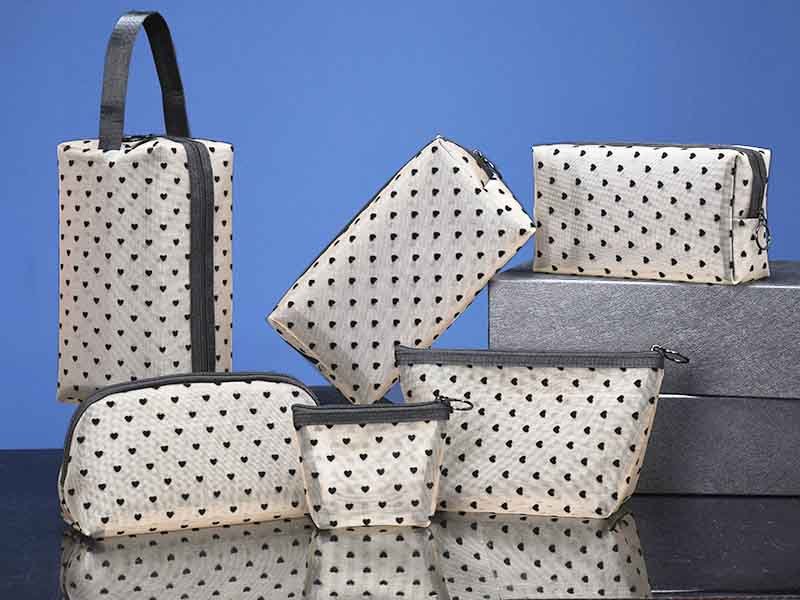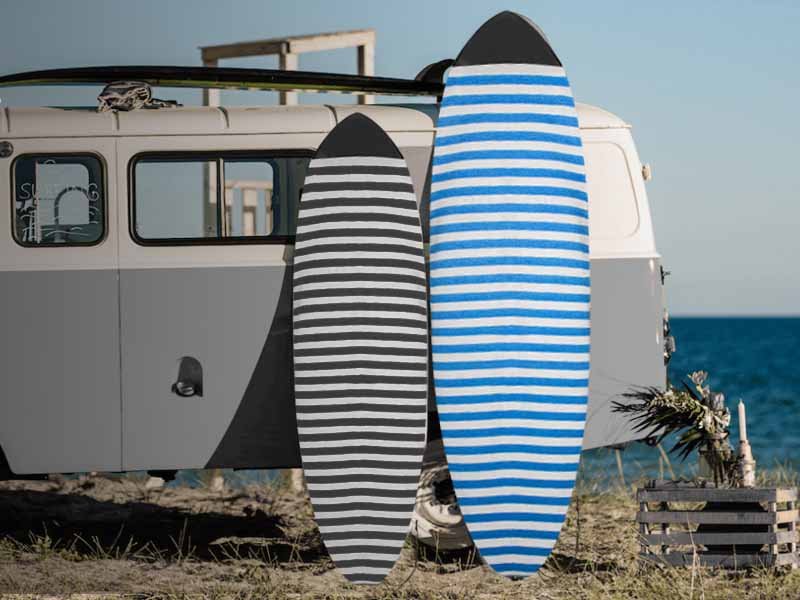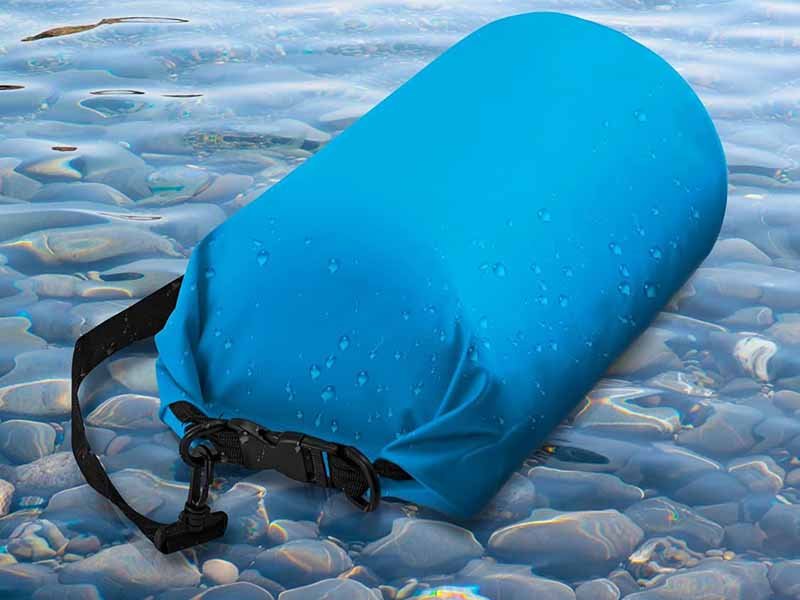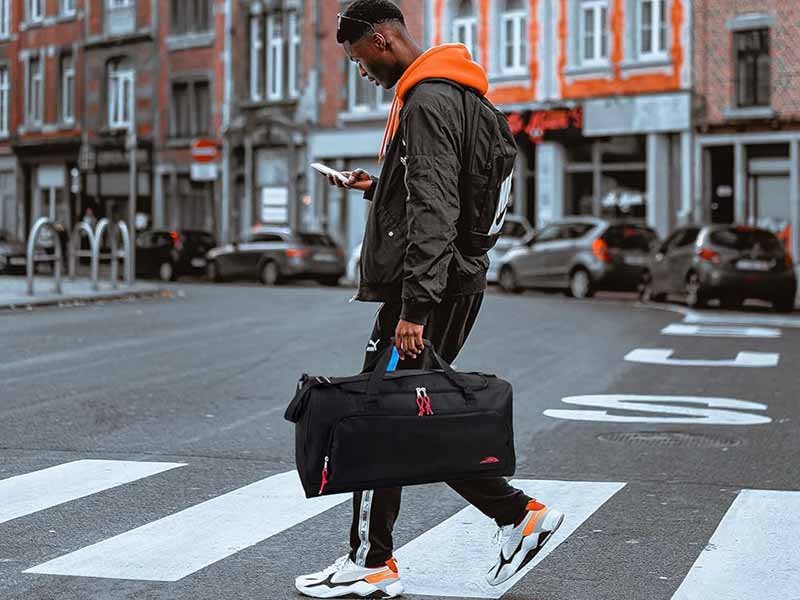A makeup bag isn’t just storage—it’s a mobile beauty station that must withstand spills, constant handling, and the rigors of travel, all while looking great. Imagine pulling your bag from a suitcase: the last thing you want is damp stains, cracked coatings, or a ripped seam dumping brushes everywhere. Choosing the right material transforms a cosmetic pouch from a frustrating weak link into a reliable companion that protects your products and enhances your brand’s reputation.
The best material for makeup bags combines water resistance, stain repellency, and easy cleaning,making PU-coated nylon (600D or higher) the gold standard. TPU-laminated canvas offers full waterproofing for travel kits, while laminated cotton and silicone provide wipe-clean convenience and aesthetic variety. Recycled PET and bio-PU leather deliver eco-friendly credentials. Your choice should align with use case,daily touch-up pouches, professional artist kits, or premium gift editions.
What Key Properties Should You Look for in Makeup Bag Materials?
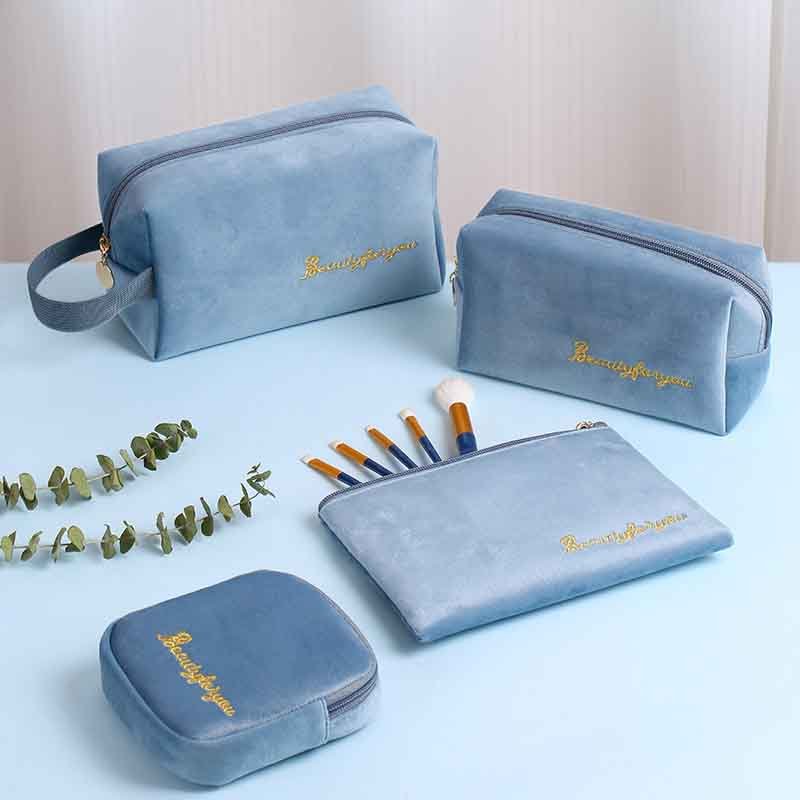
Prioritize water resistance to contain spills; stain repellency to guard against pigments; durability (abrasion and tear strength) for long-term use; flexibility and lightweight for daily carry; and cleanability, ranging from simple wipe-downs to machine washing. TPU-laminate and silicone excel in waterproofing, while 600D PU-coated nylon hits the best balance of cost, abrasion resistance (≥25,000 Martindale cycles), and weight (150–200 g/m²).
A functional makeup bag must protect expensive cosmetics without becoming an unwieldy burden. Understanding the core material properties ensures you deliver products that delight customers and reduce returns.
Water Resistance & Spill Containment
- Mechanism: Coatings (PU, TPU) or laminates create a non-porous barrier, preventing liquids from penetrating.
- Testing: Hydrostatic head ratings—5,000–10,000 mm indicate strong repellency, equivalent to handling sudden spills or light rain without leakage.
- Real-World Impact: A traveler’s foundation bottle that breaks remains contained, wiping away effortlessly instead of soaking through to clothing.
Stain Repellency
- Coating Chemistry: Durable water repellent (DWR) or silicone layers cause pigments to bead up, stopping them from embedding in fibers.
- Cleaning Cycle Resistance: Look for Oeko-Tex® Standard 100 certification, confirming safe, stain-resistant finishes that endure repeated cleanings without chemical bleed.
Abrasion & Tear Strength
- Abrasion Resistance: Measured by Martindale cycles—target ≥20,000 for cosmetics pouches that see daily friction from brushes and zippers.
- Tear Strength: ASTM D2261 test values above 25 N ensure materials resist snagging on metal hardware or interior compartments.
Weight & Packability
- Denier Trade-offs: Higher-denier fabrics (600D–1000D) offer more protection but weigh 150–300 g/m²; lower-denier (200D–300D) reduces weight to 100–150 g/m² but slightly less durable.
- Design Strategies: Use heavier materials for base/exterior and lighter for interior pockets to balance protection and portability.
Flexibility & Structure
- Soft vs. Structured: Soft-touch silicone and PU allow fold-flat packing; canvas and laminated cotton need internal interfacing (100–300 gsm) to hold shape.
- User Preference: Daily users often favor flexible pouches that conform to handbag interiors, while travelers appreciate structured cases that hold tools upright.
Breathability & Odor Resistance
- Importance: Makeup residues can trap odors. Some cotton blends or mesh panels enhance airflow for longer freshness in gym or travel scenarios.
Aesthetic & Customization
- Surface Printability: Smooth PU-coated surfaces and laminated cotton accept digital or screen printing crisply, enabling brand logos, patterns, and personalization.
- Colorfastness: UV and wash-tested fabrics maintain vibrancy—critical for fashion-forward collections.
Which Fabrics Offer Superior Water and Stain Resistance?
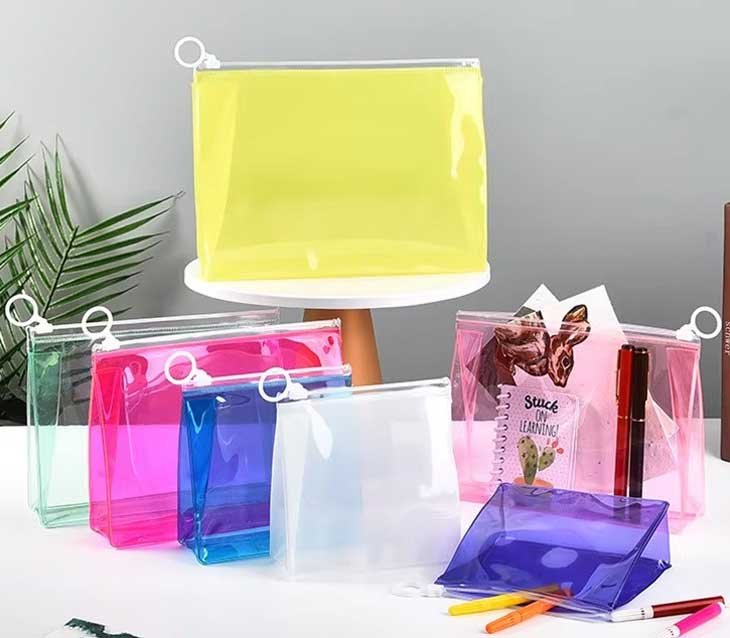
Top performers include 600D PU-coated nylon (hydrostatic head 5,000–10,000 mm), TPU-laminated canvas (fully waterproof), silicone (non-porous, hygienic), and laminated cotton (PU/PVC backing). Polyester with DWR finishes offers budget-friendly repellency. Among these, 600D PU-nylon balances cost ($4–$6/yard), weight (150–200 g/m²), and abrasion resistance (25,000+ cycles). For premium lines, TPU lamination ($6–$10/yard) delivers leakproof assurance and rich matte finishes.
Protecting cosmetic treasures demands fabrics engineered to resist water, chemicals, and stains. Below, we dissect leading contenders:
1. PU-Coated Nylon
- Construction: Woven nylon base (600D–1000D) coated with polyurethane on one or both sides.
- Attributes:
- Water Resistance: 5,000–10,000 mm hydrostatic head—spills bead up instantly.
- Abrasion: 25,000–35,000 Martindale cycles—handles daily friction.
- Cleanability: Wipe with mild soap; resists mildew.
- Economics: $4–$6/yard; ideal for mid-tier daily and travel pouches.
2. TPU-Laminated Canvas
- Process: Heat-bonded TPU film under precise pressure—no adhesives.
- Performance:
- Waterproofing: Fully sealed interior—no wicking.
- Tactile: Soft-touch, matte finish with slight stretch.
- Durability: 20,000–30,000 abrasion cycles; retains integrity after bending.
- Use Cases: High-end travel kits, professional makeup cases.
- Cost: $6–$10/yard; justified by premium feel and performance.
3. Silicone
- Variants: Solid silicone sheets or silicone-coated textiles.
- Pros:
- Non-Porous: Easy to rinse; resists makeup and odors.
- Durability: Immune to tears in many cases; long service life.
- Cons:
- Weight: 250–350 g/m², adding heft.
- Price: $8–$15/yard; niche application.
4. Laminated Cotton & Canvas
- Technique: Natural cotton or canvas bonded with PU/PVC.
- Benefits:
- Aesthetic: Organic texture meets wipe-clean utility.
- Comfort: Softer hand than synthetics.
- Drawbacks:
- Breathability: Lower airflow; potential for interior condensation.
- Abrasion: 15,000–20,000 cycles—best for light to medium use.
- Cost: $5–$8/yard; popular for gift and boutique lines.
5. DWR-Treated Polyester
- Approach: Durable water-repellent sprays or bath treatments.
- Performance:
- Repellency: 1,000–3,000 mm hydrostatic head—adequate for casual use.
- Maintenance: Requires periodic reapplication (~every 5 washes).
- Affordability: $2–$4/yard; entry-level water resistance.
Comparison Table
| Material | Water Resistance | Abrasion (Martindale) | Weight (g/m²) | Cost ($/yard) | Best For |
|---|---|---|---|---|---|
| 600D PU-Nylon | 5,000–10,000 mm | 25,000–35,000 | 150–200 | 4–6 | Daily & travel pouches |
| TPU-Laminated Canvas | Fully Waterproof | 20,000–30,000 | 180–220 | 6–10 | Professional & luxury kits |
| Silicone | Fully Waterproof | N/A | 250–350 | 8–15 | Hygienic, leakproof pouches |
| Laminated Cotton/Canvas | 3,000–7,000 mm | 15,000–20,000 | 200–300 | 5–8 | Gift & boutique collections |
| DWR Polyester | 1,000–3,000 mm | 10,000–15,000 | 100–150 | 2–4 | Budget-friendly options |
By aligning your product’s price point, use case, and brand values, you can choose—from mid-range PU-nylon pouches to premium TPU-clad kits—knowing exactly how each material will perform in real-world conditions.
How Do Durability and Ease of Cleaning Vary by Material?
Durability depends on abrasion resistance (Martindale ≥20,000 cycles) and tear strength (ASTM D2261 ≥25 N). PU-coated nylon and TPU lamination lead in robustness; silicone offers near-indestructibility. Cleaning ranges from wipe-clean (synthetics) and machine-washable (laminated cotton on gentle cycles) to full rinsing (silicone). Avoid bleach on PU coatings. Regular care—wiping spills immediately and air-drying interiors—preserves both appearance and material integrity over years of use.
Longevity and maintainability cement a makeup bag’s reputation. Let’s explore how leading materials hold up:
Abrasion and Tear Resistance
Nylon & TPU:
- 600D Cordura®: 25,000–35,000 Martindale cycles—survives constant rubbing from brushes, keys, and zippers.
- TPU Laminate: 20,000–30,000 cycles; underlying canvas adds tear strength (≥30 N).
Silicone:
- Near-Impervious: Silicone resists tearing and resists chemicals—ideal for high-contact areas.
Laminated Cotton:
- Moderate: 15,000–20,000 cycles; better suited for low-contact gift editions.
Cleaning Protocols
PU/Nylon & TPU:
- Daily: Wipe with damp cloth and mild detergent; air-dry away from heat.
- Deep Clean: Spot-treat stubborn stains with diluted isopropyl alcohol; avoid abrasive brushes.
Silicone:
- Rinse & Dry: Can be rinsed under warm water and wiped—resists mold and mildew.
Laminated Cotton:
- Machine Wash: Gentle cycle (cold water), zip closed, air-dry flat to preserve lamination.
- Ironing: Not recommended—heat can delaminate backing.
Maintenance Over Time
- Coating Wear: PU coatings may develop micro-cracks—reapply fabric sealant annually to rejuvenate repellency.
- Seam Integrity: Inspect stitching near high-stress zones; touch up with seam-seal tape if needed.
User Scenarios and Care Frequency
- Frequent Travelers: Wipe-clean materials require minimal downtime—ideal for last-minute packing.
- Everyday Bag-in-Bag Users: May need weekly wipes; monthly sealant reapplications ensure freshness.
- Luxury Gift Bags: Quarterly professional clean and conditioning of any leather trim maintain premium look.
Are Eco-Friendly and Vegan Materials a Viable Choice For Makeup Bags?
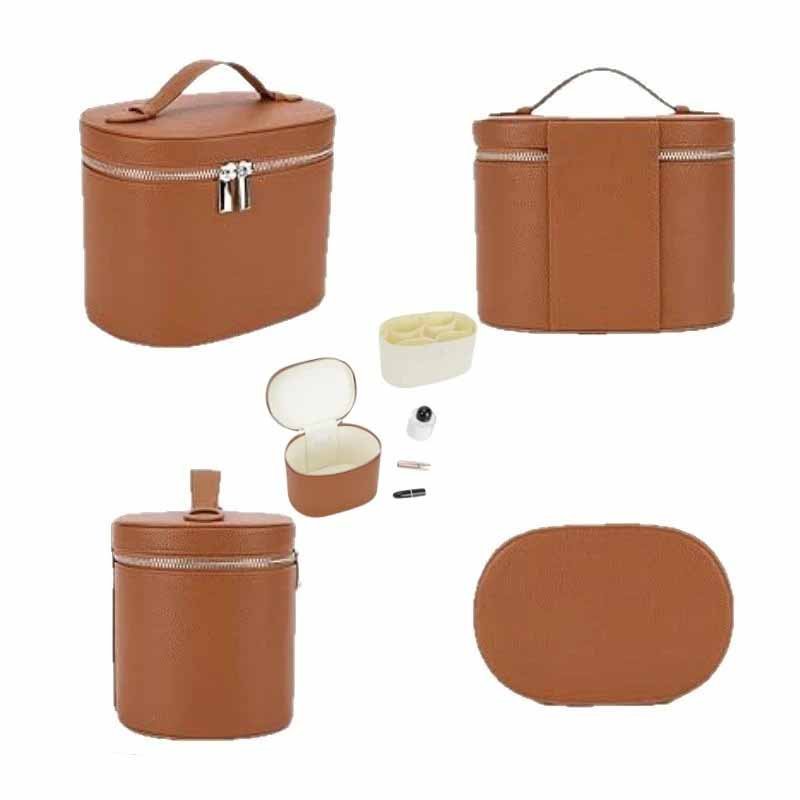
Eco-materials like recycled PET fabrics (Global Recycled Standard), bio-PU leather, and cork fabric combine sustainability with solid performance. Recycled PET withstands 15,000–25,000 Martindale cycles and matches DWR-coated synthetics for repellency. Bio-PU offers 3,000–6,000 mm water resistance and softer hand at a 20–30% price premium ($6–$10/yard). Cork brings natural water repellency and unique texture but trades off some abrasion strength (10,000–15,000 cycles). These options resonate with green-minded consumers while delivering real functionality.
The beauty industry’s shift toward sustainability has made eco-friendly and vegan materials more than just a marketing buzzword—they’re now central to brand differentiation and customer loyalty. Below, we dissect the key options, their performance profiles, and the strategic considerations brands must weigh.
1. Recycled PET (rPET) Fabrics
- Origin & Processing: Post-consumer plastic bottles are cleaned, melted, and extruded into polyester fibers. This circular approach diverts waste and cuts virgin-polymer demand by up to 60 %.
- Performance Metrics:
- Abrasion Resistance: 15,000–25,000 Martindale cycles—comparable to virgin polyester.
- Water Resistance: With DWR treatments, hydrostatic head ratings of 1,000–3,000 mm.
- Weight: 120–160 g/m², keeping bags lightweight.
- Cost & Availability: $3–$6 per yard—slightly above virgin polyester but offset by consumer willingness to pay ~10 % premium for recycled goods.
- Certifications: Seek Global Recycled Standard (GRS) and Oeko-Tex® labels to validate recycled content and chemical safety.
2. Bio-PU Leather
- Sustainable Formulation: Replaces up to 50 % petroleum with plant oils (castor, soybean) or bio-based polyols. Reduces CO₂ footprint by 20–30 % compared to conventional PU.
- Key Attributes:
- Waterproofing: 3,000–6,000 mm hydrostatic head—suitable for light spills.
- Abrasion: Approximately 20,000 Martindale cycles.
- Hand Feel: Smooth, supple, nearly indistinguishable from classic PU.
- Economic Trade-Off: Costs $6–$10 per yard—20–30 % above standard PU—but justified by eco-story and biodegradability at end-of-life.
- Market Appeal: Popular in cruelty-free fashion segments; supports vegan and animal-welfare brand narratives.
3. Cork Fabric
- Harvest & Sustainability: Bark of cork oaks is stripped without cutting trees; harvested every 9–12 years. This practice sustains biodiversity and prevents deforestation.
- Performance Profile:
- Natural Water Repellency: Micro-cellular structure causes liquids to bead on the surface.
- Abrasion & Tear: 10,000–15,000 Martindale cycles; tear strength ~30 N.
- Aesthetics: Unique grain patterns, tactile warmth.
- Cost Considerations: $8–$15 per yard—premium pricing reflects artisanal sourcing and eco credentials.
- Applications: Ideal for high-end gift editions and minimalist “green” collections.
4. Comparative Performance Table
| Material | Abrasion (cycles) | Waterproofing (mm) | Weight (g/m²) | Cost ($/yard) | Eco Credentials |
|---|---|---|---|---|---|
| rPET Fabric | 15,000–25,000 | 1,000–3,000 | 120–160 | 3–6 | GRS, Oeko-Tex® |
| Bio-PU Leather | ~20,000 | 3,000–6,000 | 200–240 | 6–10 | 20–30 % lower CO₂ footprint |
| Cork Fabric | 10,000–15,000 | Natural repellency | 200–250 | 8–15 | Renewable harvest, biodegradable |
| Standard PU | 20,000–30,000 | 5,000–10,000 | 180–220 | 4–8 | Petrochemical-based |
How to Choose the Right Material Of Cosmetic Bags for Different Use Cases?
Select your material based on how and where the bag will be used: for daily essentials, lightweight 200–300D PU-nylon offers easy cleaning and pocket-friendly flexibility; for travel kits, 600D TPU-laminated canvas ensures full waterproofing and abrasion resistance; professional makeup artist pouches benefit from clear PVC panels plus a rugged nylon body for tool visibility; premium or gift editions shine in cork or bio-PU leather for a luxury feel; security-compliant clear bags require sturdy PVC or TPU to meet venue regulations while remaining leakproof.
Choosing the optimal material for a makeup bag isn’t one-size-fits-all—it depends on the bag’s intended environment, the user’s habits, and the performance demands of each scenario. Below, we explore five common use cases and the material attributes that make each combination a success.
1. Daily Carry & Touch-Up Pouches
Key Needs: Portability, quick access, light protection.
Material Choice: 200D–300D PU-coated nylon (120–150 g/m²).
- This denier range balances weight and durability—light enough to slip into a tote or handbag without adding bulk, yet coated to resist small leaks and cosmetic dust.
- User Benefit: Wipeable surface cleans pigment smudges in seconds; soft hand makes it flexible for odd shapes (brush sets, compact mirrors).
Design Tips: Minimal interfacing to keep panels supple; interior wipe-clean lining; slim zipper pulls.
2. Travel Makeup Kits
Key Needs: High-volume storage, spill containment, rugged handling.
Material Choice: 600D–1000D TPU-laminated canvas (180–220 g/m²).
- The TPU laminate creates a fully waterproof barrier—any foundation or cleanser leaks stay contained. Heavy-duty canvas chassis resists abrasion from luggage handles and TSA bins.
- User Benefit: Meets carry-on and checked-bag rigors; interior compartments drain and dry rapidly.
Design Tips: Reinforced seams with seam-seal tape; mesh or clear PVC pockets for breathability; integrated drain holes.
3. Professional Artist Pouches
Key Needs: Tool visibility, quick sorting, durability against sharp edges.
Material Choice: Clear PVC panels (300 µm) combined with 600D nylon shell.
- The transparent front lets artists locate brushes, pencils, and palettes at a glance, speeding setup under tight show deadlines. The reinforced nylon back protects from wear.
- User Benefit: Quick tool swaps, easy wipe-down of pigment smears, long service life under repeated abrasion.
Design Tips: Elastic loops inside for brush retention; heavy-duty YKK® #8 coil zippers; TPU-lined base.
4. Gift & Luxury Editions
Key Needs: Premium tactile experience, eco-credentials, gift-worthy presentation.
Material Choice: Cork fabric or bio-PU leather (200–250 g/m²).
- Cork’s unique grain and plant-based sourcing tell a sustainability story; bio-PU mimics genuine leather feel with lower environmental impact. Both materials accept embossing, foil stamping, and screen prints elegantly.
- User Benefit: Distinctive look and texture elevate brand perception; collectible appeal for gifting.
Design Tips: Contrast suede or satin linings; foil-stamped logos; custom gift boxes.
5. Security-Compliant & Event-Specific Bags
Key Needs: Transparent design, leak protection, venue compliance.
Material Choice: PVC or TPU clear film (200–300 µm).
- Meets “clear bag” policies at stadiums and events, while robust enough to handle spills and abrasion.
- User Benefit: Hassle-free entry at security checkpoints; maintains leakproof integrity.
Design Tips: Reinforced welded seams; heat-transferred logos; integrated wristlet or strap.
What Maintenance and Care Practices Extend Makeup Bag Lifespan?
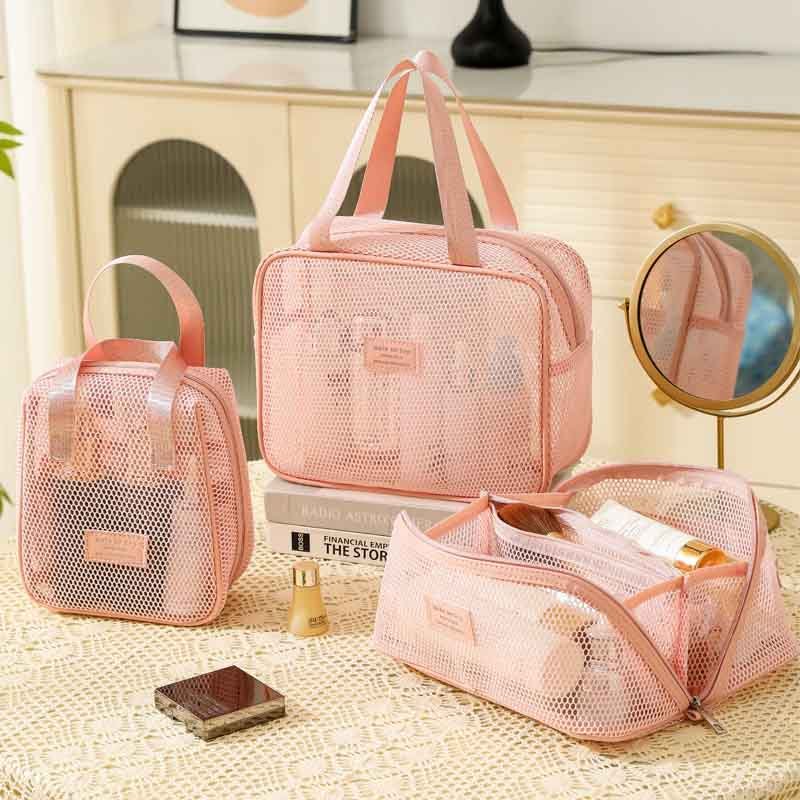
To prolong your makeup bag’s life, wipe down PU-/TPU-coated exteriors after each use, air-dry interiors to prevent mold, and apply a DWR reproofing spray quarterly on water-repellent fabrics. Rinse silicone pouches with mild soap and water. Machine-wash laminated cotton on gentle cycles (cold water), then air-dry flat. Store bags unzipped in a cool, dry place stuffed with acid-free tissue to retain shape. Condition any leather or cork accents biannually with pH-neutral balms.
Even the most robust materials benefit from consistent, thoughtful upkeep. Below are detailed care routines tailored to each major makeup-bag material category:
1. Daily Upkeep for All Materials
- Empty & Shake Out Debris: Remove makeup crumbs, glitter, and dust after every use. This simple step prevents buildup that can abrade fabrics and jam zippers.
- Wipe Exterior Surfaces: Use a soft microfiber cloth dampened with water (or 1:50 mild detergent solution) to remove cosmetic residue from coated nylon, TPU, and silicone. This prevents pigment stains from setting.
2. Weekly Interior Maintenance
- Air-Dry: Leave the bag unzipped in a well-ventilated room to evaporate moisture from spilled liquids and cleaning. This reduces mildew risk.
- Spot Cleaning Liners: For removable liners, hand-wash in warm water with mild soap; for non-removable, use a damp cloth to blot spills immediately, then air-dry.
3. Monthly Treatments
Reproofing Water-Repellent Fabrics:
- Products: Apply a spray-on DWR (durable water repellent) to PU- and TPU-coated surfaces per manufacturer instructions.
- Benefit: Restores repellency lost through abrasion and cleaning, maintaining hydrostatic head performance.
Leather & Cork Conditioning:
- Frequency: Every 3–6 months.
- Process: Use a pH-neutral leather or cork conditioner. Rub sparingly with a soft cloth, let rest 15 minutes, then buff off excess. This prevents drying, cracking, and preserves patina.
4. Deep Cleaning & Washing
Laminated Cotton & Canvas Bags:
- Machine Washing: Close all zippers, turn inside out, and wash on a gentle cycle with cold water and mild detergent.
- Drying: Lay flat on a towel to air-dry; avoid direct sunlight to prevent laminate yellowing.
Silicone Bags:
- Rinsing: Rinse under warm water; use a soft brush with dish soap for stubborn marks.
- Sanitizing: Silicone tolerates occasional boiling (2–3 minutes) to sanitize—ideal for hygiene-critical uses.
5. Hardware & Zipper Care
- Lubrication: Apply paraffin wax or a silicone-based zipper lubricant to metal and nylon zippers quarterly to maintain smooth operation.
- Inspection: Check hardware—D-rings, buckles, snaps—for loose screws or corrosion. Tighten or replace components before they fail.
6. Storage Best Practices
- Maintain Shape: Stuff bags lightly with acid-free tissue paper or bubble wrap to prevent creasing and preserve structure.
- Cool, Dry Environment: Store away from heat sources and direct UV light, which can degrade coatings and fade colors.
- Unzipped Position: Keeps linings ventilated and prevents zipper teeth misalignment from constant tension.
7. Handling Common Issues
- Coating Delamination: If PU or TPU begins to peel at seams, apply seam-seal tape on the interior to bond layers temporarily, then consider professional re-lamination for long-term fix.
- Persistent Odors: Sprinkle baking soda inside overnight, then vacuum or shake out. For severe cases, place an open container of activated charcoal inside a sealed bag for 48 hours.
Conclusion
Choosing the best material for makeup bags means balancing performance, aesthetics, cost, and user needs. From everyday PU-nylon pouches to TPU-laminated travel kits, clear artist cases, and eco-friendly cork editions, there’s a perfect fabric for every niche. Szoneier leverages over 18 years of supply-chain expertise and in-house R&D to source, prototype, and produce custom makeup bags with low MOQs, quick sampling, and 100% quality guarantees.
Contact Szoneier today for free design consultation, swatches, and sample runs—let us help you create makeup bags that stand out, perform flawlessly, and leave customers reaching for your brand every time.

